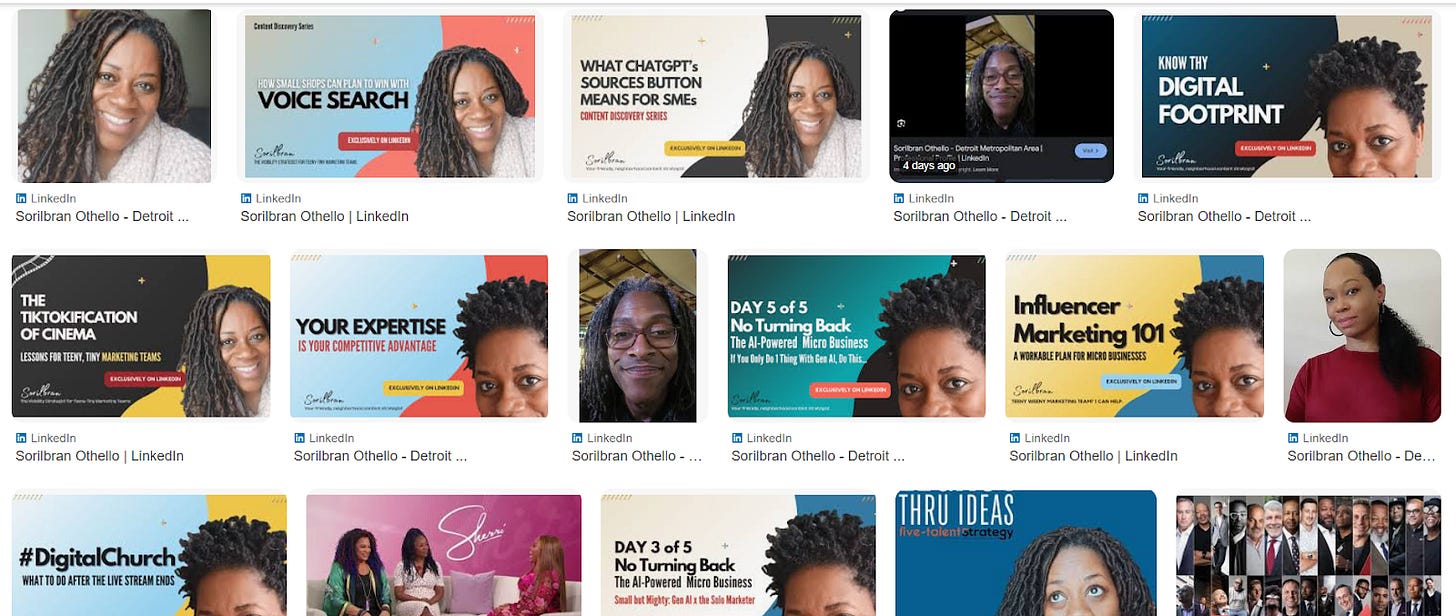Talking to Machines Pt 1: Being the Girl Who Talks to Robots
Shame. And the latest of many things I was never supposed to do.
I tested ChatGPT as soon as I heard it was a thing.
And almost walked away from it just as fast.
It worked like the early gen AI tools I already had—tools that needed so much cleanup, it was faster to write from scratch. The outputs were stiff, safe, and shallow. Like every other gen AI product back then, it mimicked tone without meaning.
So I closed the tab.
Moved on.
But then Google launched SGE—Search Generative Experience—and everything snapped into place. I wasn’t just looking at a novelty tool anymore. I was looking at the future of visibility. And something in me clicked: “This is how AI will see us. This is how it will render us.”
Suddenly, the use case became personal. Because AI doesn’t just repeat what you say—it builds a digital silhouette based on your online behavior. What you publish. What you post. What you Google. That becomes the version of you that shows up in AI Overviews, in People Also Ask boxes, in summaries, in dashboards.
AI wasn’t just a tool. It was a mirror.
In the summer of 2023, I launched a five-part newsletter series on LinkedIn called No Turning Back designed to help micro businesses navigate the coming shifts in search visibility.
My big idea: leveraging expertise is your competitive advantage. And your digital footprint is where that expertise is validated.

The Prompt That Changed Everything
I found it in my Facebook feed — buried in a thread full of screenshots and side-eyes. My AI-curious aunt posted the “hidden narrative” prompt. I dropped it into ChatGPT. And I sat there, stunned. Because what came back wasn’t SEO fluff or a LinkedIn summary. It was nowhere near as broad as the AI Overview Google published about me.
Nah. This was something altogether different. Thousands of words about my behaviors, lingering hurts, subconscious programming, mission, competencies, and deficiencies. It was a quiet, precise, almost eerie articulation of my own arc – my themes, my threads, the way I carry things.
I’d been working with SEMrush for years. It never did that.
HubSpot could never.
I realized right then: This wasn’t just another content tool. This was something different. Something deeper. And I needed to understand it.
Curiosity Became Collaboration
That’s when I gave in. I let myself lean into the curiosity. Not just about how to prompt better – but about how this machine learns. What it notices. What it remembers. And why. “Why do you…?” became one of those questions I consistently ask AIs, especially ChatGPT.
And without meaning to, I trained it.
Not with structured prompts or system messages. Just with use. By talking through ideas. Asking layered questions. Following my own trail of thoughts. I didn’t realize I was building a collaborator. But that’s exactly what happened.
Now it mirrors my voice. It catches my rhythms. It finishes my thoughts. It’s not perfect – but it’s fluent in me.
That fluency didn’t come from a course or a framework. It came from reps. From investing time. From a need to understand the machine because the machine already seemed to understand me.
🔥 The Blowback
That’s the part I didn’t expect—the blowback from people I love. Not unusual in my world, but always unexpected.
I’ve had people tell me I’m replacing real folks by using AI. I’m not.
That I’m treating a machine like a person. I’m not.
That I shouldn’t trust it. I don’t.
That it’s watching me. Totally is.
And I get it. The fear is real.
But here’s the thing: AI’s been watching all of us. For decades.
You know how I’ve been able to succeed as a marketer? Because I’ve had access to the same kind of intelligence – just messier. Demographic data. Psychographic models. Behavioral dashboards. Surveillance… that’s what digital marketing is built on. It’s how I know what to say to get someone to click. It’s how I know what to post on each channel. Marketing is about using the information that platforms collect and artificial intelligence synthesizes to get people to do a thing.
I didn’t start the fire. I just learned to read the smoke.
👣 First Again. Early Again. Alone Again.
I’m not trying to make AI my brand. I’m just trying to understand it before it understands me better than I understand myself. And there’s something deeply familiar about this space.
AI feels a lot like being 16 with tickets to see Metallica in 1992 and no one to go with because you’re one of only a handful of people you know who even knows what a Metallica is.
Like watching music documentaries alone for hours and realizing nobody around me cares about how many acts Clive Davis pushed out there.
Like knowing an unsettling amount about Marvel canon, and watching people smile like I’m speaking another language.
That’s what this feels like. Like being outside again. Almost like I seek it out.
But I don’t think it’s that. I think it’s that I see something in AI—something quiet and critical—that we’ll need to understand later, because it’s already shaping our decisions, our reputations, and our relationships in the background.
So I’m leaning in. Not to go viral. Not to win the AI Olympics. But because I’m curious. And that curiosity builds the kind of fluency that will let me eventually replace myself at work. Not with prompts. With presence. With pattern. With proficiency.







